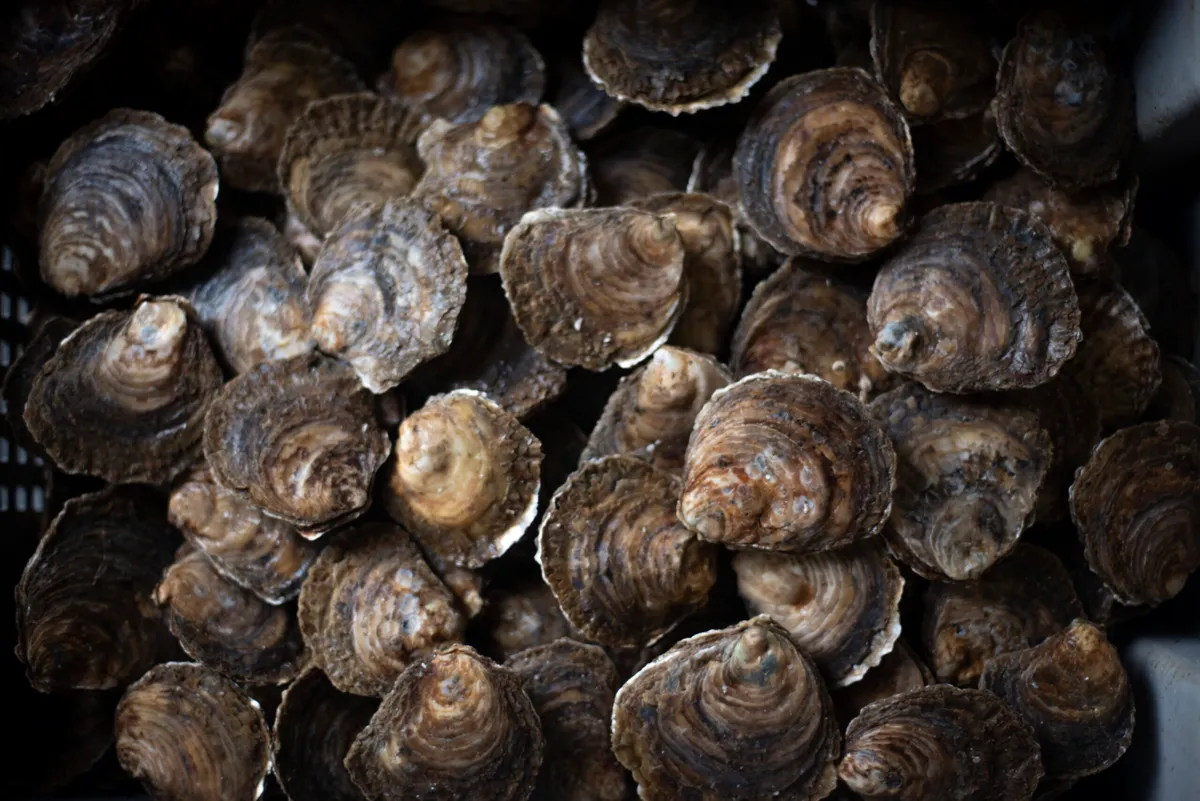European native oysters (Ostrea edulis) were once a mainstay of Britain’s coastline, providing essential habitat for other marine species. However, since the 1800s, habitat loss, over-harvesting, pollution and disease have led to a 95% decline in the population.
In an attempt to restore the population and support Britain’s marine life, conservationists from the Wild Oysters Project have introduced 10,000 oysters to a newly built 7,500sqm living reef off the coast of North East England.
- Barnacles guide: what acorn barnacles are and their life cycle
- Slipper limpet guide: what it is, what it eats – and how a slipper limpet reproduces
- Seashells expert guide: what are they, where do they come from, and how are they made?

Why do oysters matter?
"Despite their small size, we recognise oysters as ocean superheroes for making such a big impact within the marine coastal environment,” said Celine Gamble, Wild Oysters Project Manager.
“They‘re capable of filtering approximately 200 litres of water a day – around a bathtub’s worth – which in turn contributes towards improving our coastal water quality.
Oysters are "capable of filtering approximately 200 litres of water a day – around a bathtub’s worth – which in turn contributes towards improving our coastal water quality."
“Native oyster reefs have disappeared from our British coastline, and with this we have also lost the benefits that they bring, such as providing essential habitat for other marine species.
“We’re determined to bring the species back from the brink of extinction, which will in turn help contribute towards healthier and more resilient coastal waters across the UK.”
Creating an oyster reef
The location of the oyster reef was carefully selected by the Wild Oysters Project for its suitable substrate, water depth and proximity to the oyster nurseries in Sunderland Marina.
Workers then deposited over 750 tonnes of cultch (old stones and scallop shell) onto the seabed off the coast of Whitburn just north of Sunderland, forming the foundation for a new underwater marine ecosystem.

The Wild Oysters Project (a partnership between the Zoological Society of London, Blue Marine Foundation, British Marine and local delivery partner Groundwork North East and Cumbria) hopes that the 10,000 oysters will release the next generation of baby oysters to the seabed, which will in turn will settle and grow on the reef, boosting the native oyster population in the UK.
In time, the reef will become an important habitat for many other species of marine wildlife, including species such as the European eel, blue mussel, seabass, brittle star species, crab species, nudibranchs and pipefish.
- 10 deadliest sea creatures: Meet the most dangerous animals in the ocean
- What are sea urchins? A guide to the fascinating and strange creature that inhabits the sea bed
- Why is whale poo good for the planet?
Local Wild Oysters Marine Ecology Technical Lead Ashleigh Tinlin-Mackenzie said: “Oysters have historically been a part of the local culture - with signs of oysters present through ‘oyster saloons’ in Tynemouth and oyster specialist fish markets in South Shields in the mid 1800s, as well as Oystershell Hall, once situated on Oystershell Lane in Newcastle city centre – but this is the first time they’ve been restored to our waters, where they have long been absent, until now."
The project was made possible thanks to £1.18 million raised by players of People’s Postcode Lottery.
